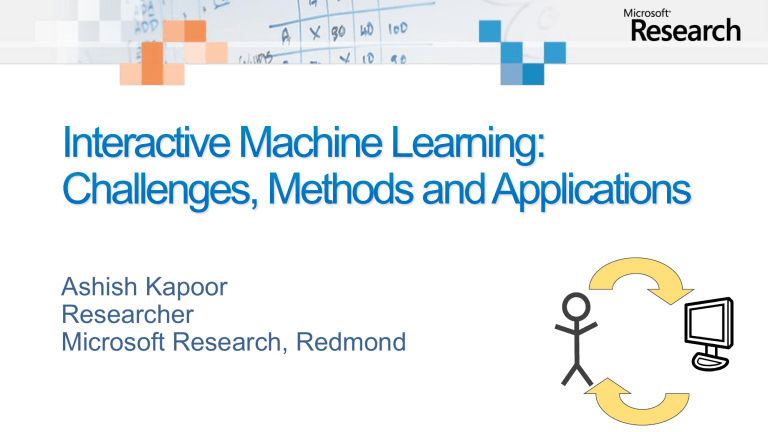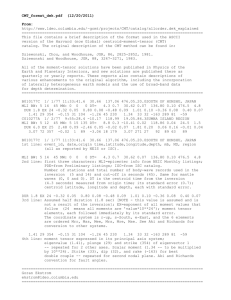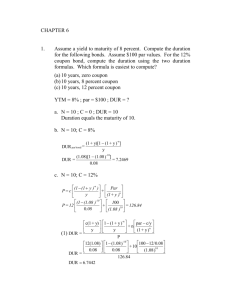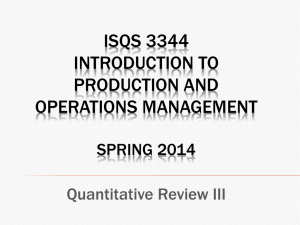
Ashish Kapoor
Researcher
Microsoft Research, Redmond
Key Challenge: Acquiring labeled cases, Dynamic contexts
e.g., User intentions, needs, preferences, cognitive states
Approach 1: Offline bulk assessment
Interruption Workbench
Outlook Mobile Manager
Approach 2: In-stream supervision
Cases labeled implicitly by watching activity
Lookout
Priorities
Approach 3: Experience sampling
Probe in real time
e.g. BusyBody (CSCW 2004)
Traditional
Machine
Learning
Systems
Cost =
Misclassification
Cost
Misclassification Cost
+ Cost to Obtain Labeled Training Data
Our Aim
Label Cost
Goal: Maximize Accuracy with Minimum Effort
Decision theoretic perspective on learning:
Value of Information = Reduction in Expected Cost
Stream Based
(Online ESM)
Pool Based
(Offline ESM)
Pool of Data
Stream of Data
Current
Data
?
User
Provides
a Label
Training
User
Provides
a Label
Training
Active Set
User
Active Learning
Heuristic
Classifier
User
Active Learning
Heuristic
Classifier
Develop dynamic learning systems that adapt to people and context over time
Decisions about querying humans / oracle
to
?
Current
Data
Cache
Active Set
Value of
Information
Computations
Context Buffer
Time
DT-dyna
Uncertainty
Manager Data:
DT-dyna = 68.29% (35 Probes)
DT = 66.19% (109 Probes)
Random = 57.75% (50 Probes)
Kapoor & Horvitz UAI 2007
DT-dyna
Uncertainty
Developer Data:
DT-dyna = 85.59% (12 Probes)
DT = 89.01% (39 Probes)
Random = 78.69% (8 Probes)
Average Number of Probes Per Day vs Number of Days into Study
Average #of Probes Per
Day
DT-dyna
50
Random
40
30
20
10
0
-10
1
2
3
4
5
6
Number of Days into Study
7
8
9
10
11
12
13
Average Recognition Accuracy Per
Day
Average Recognition Accuracy Per Day vs Number of Days into Study
100
DT-dyna
Random
90
80
70
60
50
40
30
1
2
3
4
5
Number of Days into Study
6
7
8
9
Voicemail Management Systems
Provide tags / classification / summarization
Very hard to build a system that would work out of the box
Need personalized training
Dynamic context as preferences might change with time
Our approach:
User driven
Guide the user instead of actively probing
VOP / VOF / VOR provides a nice way to replace an out-of-box model
with a more personal one
Classify Voice Messages
Caller Knows Well? Yes / No
Urgent / Non-Urgent
Bulk / Non-Bulk
Mobile / Non-Mobile
Other classes
Speech
Recognizer
(Keyword
Spotting)
Summarize
Display on the Subject Line
Vmail
Pitch Tracker
(Syllable Rate,
Pauses etc)
Meta Data
Extractor
(Date, Time,
Size etc)
Gaussian
Process
Classification
Classification
Result
Classification
Probabilities
Annotation
tool
Knows Well / Does Not Know Well
207 Voice Messages Collected over
8 Months
Misclassification Cost = 10 USD
Label Cost = 0.01 USD * Length
Selective Supervision
Random
Accuracy with 22 labels
Accuracy with 22 labels
Knows Well? Yes / No : 72.9% using 518.5$
Mobile / Not Mobile
: 66.9% using 632.2$
Urgent / Non-Urgent
: 53.2% using 899.5$
67.8% using 635.0$
63.0% using 727.6$
53.2% using 913.0$
Prosodic
Features
Extracted Features
Well Acquainted
Not Urgent
Key Words
Unacquainted
Urgent
Meta Data
isExternal
isWeekend
am_office
pm_office
after_hrs
Size
length_VM
bye
five
from
mhm
right
seven
six
three
uh-huh
you
max_dur_voice
min_dur_voice
mean_dur_voice
var_dur_voice
max_dur_sil
min_dur_sil
mean_dur_sil
var_dur_sil
max_dur_prod
min_dur_prod
mean_dur_prod
var_dur_prod
max_dur_pause
min_dur_pause
mean_dur_pause
var_dur_pause
max_delta_pit
min_del_pit
mean_del_pit
var_del_pit
syllable_rate
sil_rate
prod_rate
pause_rate
Prosodic
Features
Well Acquainted
Not Urgent
Top features for discriminating
knows well vs. does not know well
Key Words
Unacquainted
Urgent
Meta Data
isExternal
isWeekend
am_office
pm_office
after_hrs
Size
length_VM
mhm
uh-huh
right
you
that
and
to
know
me
they
max_dur_voice
min_dur_voice
mean_dur_voice
var_dur_voice
max_dur_sil
min_dur_sil
mean_dur_sil
var_dur_sil
max_dur_prod
min_dur_prod
mean_dur_prod
var_dur_prod
max_dur_pause
min_dur_pause
mean_dur_pause
var_dur_pause
max_delta_pit
min_del_pit
mean_del_pit
var_del_pit
syllable_rate
silence_rate
prod_rate
pause_rate
Prosodic
Features
Well Acquainted
Not Urgent
Top features for discriminating
knows well vs. does not know well
Key Words
Unacquainted
Urgent
Meta Data
isExternal
isWeekend
am_office
pm_office
after_hrs
Size
length_VM
five
six
three
bye
seven
from
you
four
go
zero
max_dur_voice
min_dur_voice
mean_dur_voice
var_dur_voice
max_dur_sil
min_dur_sil
mean_dur_sil
var_dur_sil
max_dur_prod
min_dur_prod
mean_dur_prod
var_dur_prod
max_dur_pause
min_dur_pause
mean_dur_pause
var_dur_pause
max_delta_pit
min_del_pit
mean_del_pit
var_del_pit
syllable_rate
sil_rate
prod_rate
pause_rate
Choose best training examples to learn object recognition
models
Joint work with: K. Grauman (UT Austin), R. Urtasun (MIT) and T. Darrell (MIT)
Appeared in: ICCV 2007
Problem:
Keyword-based image search
insufficient for finding images
Our Solution:
User defines visual rules by
examples
Joint work with: J. Fogarty (UW) and D. Tan (VIBE) and S. Winder (IVM)
Appeared in: CHI 2008
Product Photo
Learning a concept Learning a distance metric
Dist ( I x , I y ) i Dist ( Fi ( I x ), Fi ( I y ))
i
Product Photo
Learning a concept Learning a distance metric
* arg min
Dist (i, j )
i , jconcept
Dist( i , j )
Dist
(
i
,
j
)
log
e
i , jconcept
Convex function, fast minimization
i
j
Learning the concept “product photo”
Positive examples provided by the user
Negative examples provided by the user
optimal partial matching
between sets of features
Computer vision based processing
Processing by human brain
+
Better objects
recognition models
Combination based on
Kernel Alignment (fast,
convex optimization)
Joint work with: P. Shenoy (UW) and D. Tan (VIBE)
CVPR 2008
Errors made by Vision only method
Errors made by EEG only method
All the errors shown here were
correctly classified by Vision +
BCI method
Training
Vision system
Car
Cow
Classifier
Labeled Images
BCI
Classification
Unlabeled Images
Sub 1
Sub K
Beyond explicit feedback
Mixed-initiative
Brain-computer Interfaces
Non-myopic selective supervision
Learning exogenous variables
Cyclic Patterns
Unmodeled Context
Other applications
© 2008 Microsoft Corporation. All rights reserved. Microsoft, Windows, Windows Vista and other product names are or may be registered trademarks and/or trademarks in the U.S. and/or other countries. The information herein is for informational purposes only and represents the
current view of Microsoft Corporation as of the date of this presentation. Because Microsoft must respond to changing market conditions, it should not be interpreted to be a commitment on the part of Microsoft, and Microsoft cannot guarantee the accuracy of any information
provided after the date of this presentation. MICROSOFT MAKES NO WARRANTIES, EXPRESS, IMPLIED OR STATUTORY, AS TO THE INFORMATION IN THIS PRESENTATION.
Microsoft Research
Faculty Summit 2008




